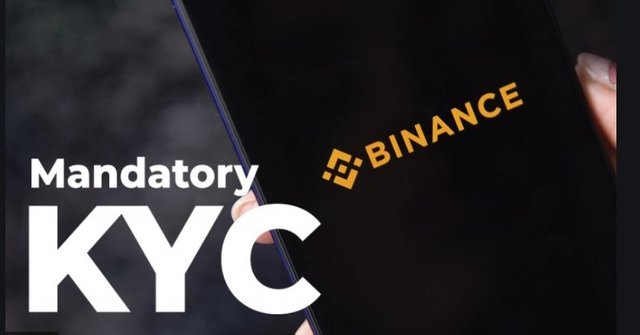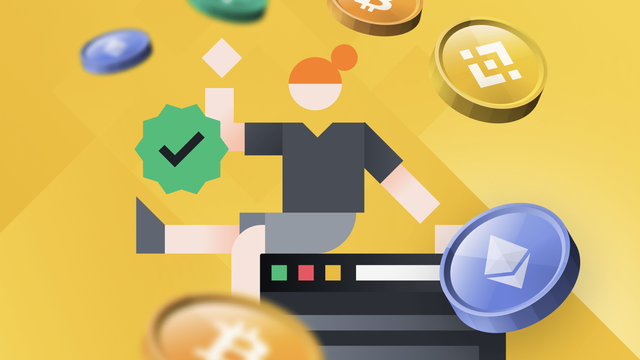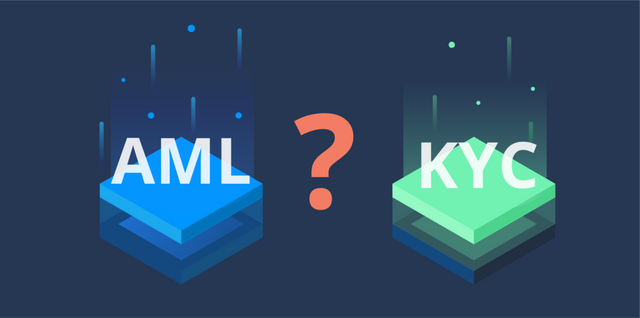WHY BINANCE TAKES KYC SERIOUSLY - You Should Too

In business, everyone indeed loves transparency; no business individual in this world would love it when he gets duped. Imagine having a platform that doesn't even have any reason to know who you are, making it seem like its customers are some robots. We understand that this isn't good enough, as it brings a lot of harm to the customers and even to the platform. And that's why every business organization needs to know its customers.
On this note, I welcome you to yet another outstanding feature on the Binance platform: KYC.
Binance has always taken KYC much seriously, and this is great. In fact, no user can currently trade without performing this KYC.
Understanding the great importance of KYC is an excellent step to providing excellent service, preventing liability, and avoiding association with all manner of fraud.
So, let's begin this article by explaining what KYC really means.
WHAT EXACTLY DOES KYC MEAN?
KYC (Know Your Customer) refers to the process banks and other financial institutions use to gather contact information and identify data from their potential and current customers. The primary purpose of KYC is to prevent fraud, money laundering, and other illicit activities. It also prevents the misuse of financial accounts.
KYC executions often commence before an individual eventually becomes a customer of that financial institution. This is where financial institutions first verify such potential customers' stated identity before the full account opening. We should note that there are no legal verification standards, as the KYC process may often look quite different for each bank.

When it comes to cryptocurrency exchange, you may not be able to access all the cryptocurrency exchange features if you fail to complete the KYC process. For example, on Binance, users were allowed to create accounts, and basic verifications were allowed, which made users perform limited transactions without submitting KYC information. There is a change in the system, as there's no longer basic Verification, which means that users need to complete the KYC verification to fully access and increase higher deposits and withdrawal limits.
WHY IS KYC IMPORTANT FOR CRYPTO EXCHANGES?
We would notice that crypto platforms have made it paramount for their users to verify their identities. This is so important because the point of KYC is to confirm that a customer is who they really claim to be and to avoid illegal acts on the platform, which include funding terrorism, tax evasion, and money laundering. Failure for a crypto exchange to perform KYC means it could be liable for those types of illegal activities.
As earlier stated, that KYC is a significant part of crypto trading. KYC is a requirement you'll definitely encounter on virtually all centralized crypto exchanges. Crypto users who prefer staying anonymous may have other options like those peer-to-peer crypto marketplaces.
However, those options would not be user-friendly, and it would not give you the quality buying on a quality centralized exchange. The sad part is that those options always cost more in transaction fees.
So, the best thing is to get prepared for the KYC process with an exchange you like. The great part is that it doesn't take much time and is so straightforward. Once this KYC process has been completed, you'll be able to trade crypto without issue.
HOW TO COMPLETE INTERMEDIATE KYC ON BINANCE
Completing the intermediate KYC on Binance has now been extremely easy, and it doesn't take much time at all.
Firstly, you can access the Identity Verification from the [User Center] - [Identification].
You can check your current verification level on the page, which determines the trading limit of your Binance account.
Intermediate Verification requires users to upload a selfie and an image of their ID documents such as passports, ID cards, and driver's licenses.
So, you need to perform an intermediate verification using these steps:
• Step 01: Sign In to your account and navigate to the [Personal Verification] page. Just go straight to the 'User Center' icon on the top right of the navigation bar. After that, you now click the 'Identification' link as shown here.

• Step 02: Select Intermediate/Identity verification, and click on the verify button to continue with ID verification.
• Step 03: Select your nationality or country of residence. This is vital information because Binance needs to comply with various location-specific regulations.
• Step 04: Fill in basic identification information. This step does include names and your address of residence. It would be best to be sure that the name matches the ID document you intend to use for the verification process.
• Step 05: Select ID document. There are three available government-issued ID documents, such as an international passport, a driver's license, or a national ID card. Now, you can decide to use any of these listed documents for your Verification.
• Step 06: Submit a photo of your document. It all depends on the document you select, as you'll be asked to submit one of both sides of the document. Regarding your passport, you can only have one photo. However, you will have to upload photos of both the front and rear faces in the other two documents.
• Step 07: Upload a portrait photo of yourself.
• Step 08: Finally is facial Verification, where you'll be required to use your device's camera to scan your face.
DIFFERENCE BETWEEN KYC & AML
Now, here is the point. As we have earlier explained the Know Your Customer approach, we should note that this requirement is just one part of a broad term, generally called Anti-Money Laundering (AML). AML includes a vast range of regulatory processes that have been designed to curb the act of money laundering. We have different AML processes, which are filtering, record management, and criminalization. We should note that KYC is just simply one of the processes of AML, which involves identity verification and enhanced due diligence.

Now, let's understand that KYC, AML, and all other processes that the regulators put in place make it extremely difficult or almost impossible for terrorists and organized criminals to hide their illicit activities. In this sense, they will not make funds acquired through illegal means appear legitimate, which significantly benefits the organization.
IDENTIFYING DOCUMENTS REQUIRED BY KYC PROCESSES
We have different documents that can be used for KYC processes, all depending on the financial institution's requirements. In general, here are some identifying documents required by KYC processes:
• Ordinary Citizen's Passport.
• Diplomatic Passport.
• Two types of Travel documents.
• Three different types of Service Passport.
• Visa.
• Two different types of residency documents.
• Work permit.
However, on the Binance platform, we have three (3) available options that can be used for KYC processes, such as an international passport, a driver's license, or a national ID card.
CONCLUSION
We should note that KYC is a vital process that should not be taken with levity if you want to take your crypto trading to the next level. If you have not performed your KYC verification on Binance, you should do that now, as it's imperative.
Do you also feel the need to join the Binance platform, and you're ready to kickstart your cryptocurrency journey with Binance? You can get started by signing up for a Binance account. You can also download the Binance crypto trading app, then go ahead to verify your account to increase your crypto purchase limit.

For more information about Binance generally, kidly visit their:
BINANCE FUTURES WEBLINK
FACEBOOK
BINANCE COMMUNITY
YOUTUBE
INSTAGRAM
TWITTER
My Binance Referral Link: https://accounts.binance.com/en/register?ref=35918256
My Binance ID: 35918256
Thanks again for reading, and see you in the next article.